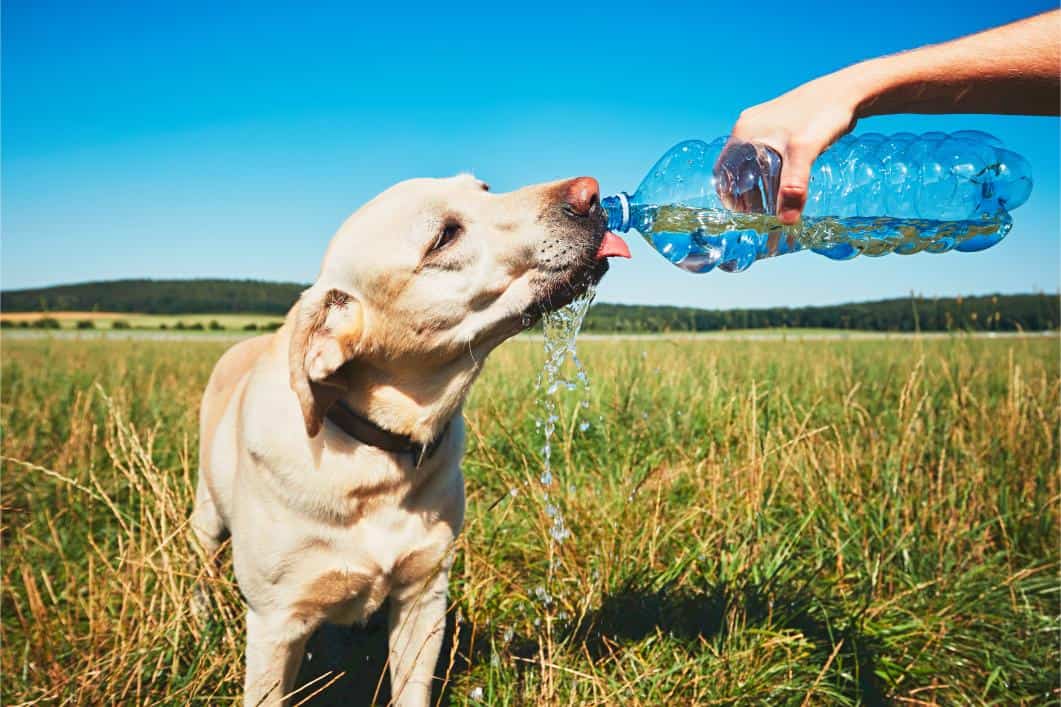Heat Stroke in Dogs: When Is Hot Too Hot?

It can get pretty hot outside in the summer in Georgia, and the team at Animal Hospital at West Woodstock wants to make sure that your pet stays safe. Keep reading to learn how to keep your pet cool and to recognize canine heat stroke before it’s too late.
What Is Heat Stroke in Dogs
Heat stroke occurs when the body’s internal temperature rises above a certain level for a sustained period. When a dog’s temperature rises above 104-105 degrees for any length of time, it can become a life-threatening emergency. At these temperatures, the body becomes unable to cool itself down, and damage can occur to the internal organs.
Exposure to hot or humid temperatures, strenuous exercise, and less-than-effective cooling strategies can lead to heat stroke in dogs. Canines only sweat through their paw pads and need to pant to cool themselves. In short-faced brachycephalic breeds, this mechanism works even less effectively.
Dogs are at the highest risk of heat stroke in the summer, especially outdoors. Signs that a pet may be in trouble include:
- Heavy panting
- Drooling
- Diarrhea
- Vomiting
- Weakness or lethargy
- Incoordination
- Confusion
- Collapse
- Seizure
Without intervention, heat stroke can have serious consequences including kidney failure, blood clotting problems, and even death.
What to Do If Your Pet Is Too Hot
Preventing heat stroke in dogs when possible is ideal. Always be sure that animals have access to shade and/or a cooled area as well as fresh, clean water.
It is best to not leave pets outdoors unattended in the warmer months. Even an intense romp up and down the fence line after a squirrel can have serious consequences without intervention.
Obviously, leaving a pet in a car even for a short time can be a recipe for disaster. Never leave your pet in a hot car. It is also best to avoid walks and outdoor activities during the peak heat of the day and save them for early morning or evening.
If you are concerned that your pet may be getting overheated, moving them to a cooler location is key. If they are responsive, encourage them to drink water.
You can also pour cool water (avoid cold water) over your pet. Do not cover with towels, but instead encourage air flow over their body with a fan or air conditioner. Do not give any medications without direction.
Please contact us immediately if you suspect heat stroke, and let us know that you are on your way in. If we are not available, you should seek care from a local emergency veterinary hospital.
Once your pet is assessed, our team may begin treatments like active cooling measures, intravenous fluid therapy, oxygen therapy, and medications to help your pet cool off and counteract any damage.
Heat stroke can be a very scary problem, but with some planning it is typically avoidable. We hope that your summer is full of fun now that you are armed with some knowledge to combat canine heat stroke.
